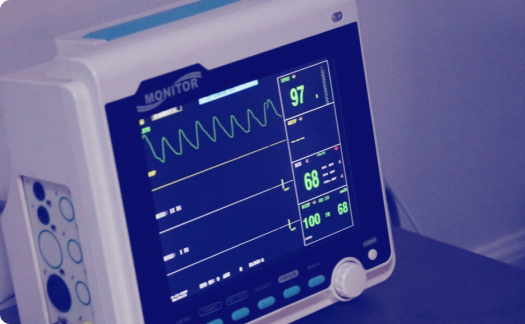- Home
- What we do
- Services
- Cybersecurity
CYBERSECURITY
Fortifying Healthcare with robust cybersecurity solutions
Secure sensitive healthcare data with an unwavering shield against evolving digital threats

CYBERSECURITY
Safeguard information with unified cybersecurity offerings
Protect sensitive healthcare information shared across multiple platforms by providing a steadfast defense against the constantly changing landscape of digital threats. Strengthen your security posture, identify vulnerabilities, and implement effective mitigation strategies with CitiusTech.
PODCAST
Cybersecurity in the GenAI Era: How can Healthcare enterprises stay one step ahead?
OFFERINGS
Securing Healthcare information

Governance, Risk, and Compliance (GRC)
Navigate the complexities of HIPAA, HITRUST, HITECH, and GDPR to fortify defenses against ransomware and other cyber threats with CitiusTech’s comprehensive GRC offering. Build resilience with customized backup strategies, automated ransomware detection, and proactive cyber wargames.

Attack Surface Management
Safeguard digital boundaries with Attack Surface Management service. Reduce the risk of cyber threats, ensuring the integrity of healthcare services by securing applications, patching vulnerabilities, and fortifying critical systems.

Cyber Defense Operations
Shield healthcare data with Cyber Defense Operations. Maintain the confidentiality, integrity, and availability of your sensitive healthcare information with cutting-edge threat detection, endpoint security, and network safeguards.

Identity & Access Management (IAM)
Elevate the security of healthcare systems with comprehensive IAM strategies. It helps prevent unauthorized access, and protect the sanctity of healthcare data by implementing stringent access controls, governance, and multi-factor authentication.

Cloud Security
Embrace the cloud while ensuring secure transition with Cloud Security offerings. From advisory services to landing zone security, CitiusTech ensures healthcare data protection across multi-cloud environments.
SOLUTIONS
Unlocking cybersecurity solutions for secured HealthTech innovations

Healthcare Platform Security
Get tailored security controls and secure application development practices with comprehensive cybersecurity solutions. Safeguard patient data and ensure compliance with healthcare regulations.

MedTech & Device Security
Ensure patient safety, regulatory compliance, and the integrity of medical data within provider environments by securing medical devices and the Internet of Medical Things (IoMT).

Healthcare Data Protection
Protect Electronic Health Records (EHR) and Electronic Medical Records (EMR) with our solutions. They help defend claims management processes, uphold patient consent, and empower medical data analytics with robust data protection measures.
WHY CITIUSTECH
Pioneering cybersecurity excellence in Healthcare
+
Servers and network
devices secured
+
Large healthcare
products
+
Cybersecurity engineering, consulting, and assessment projects
+
Enterprise customers
served
+
Medical devices
secured
Cybersecurity competencies for Healthcare
Expertise across Healthcare regulations
Comprehensive security offerings
Global standards adherence
Certified professionals and proactive measures
Tailored solutions and support

SUCCESS STORIES
Solving some of the greatest challenges in Healthcare
.png?width=270&height=320&name=white-bg-image%20(2).png)
Case Study
Ensuring Cybersecurity compliance for leading eye care products
Managed end-to-end cybersecurity for a global eye care leader, handling pre-market and post-market activities, vulnerability assessments, and incident management to ensure compliance and secure product development throughout the lifecycle.







.png?width=1920&height=1080&name=Consulting2_Menu_1%20(1).png)

















